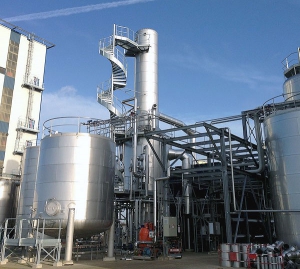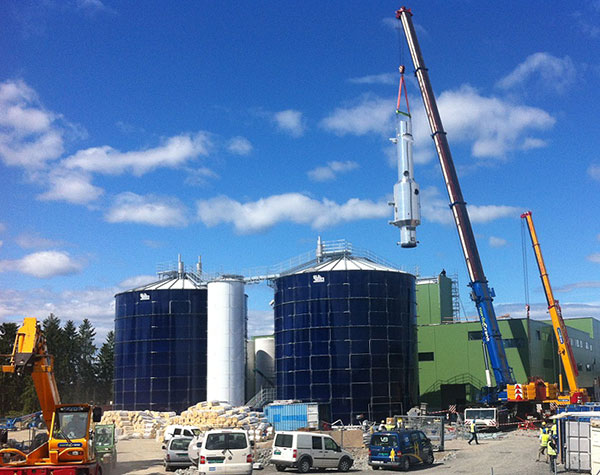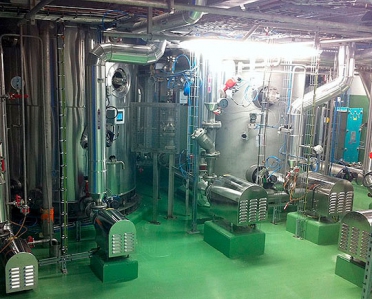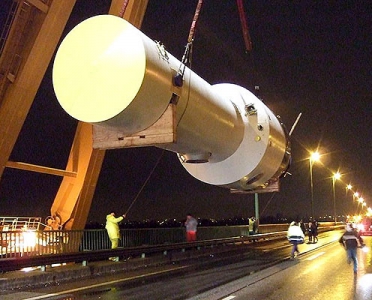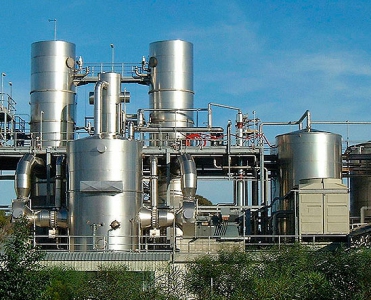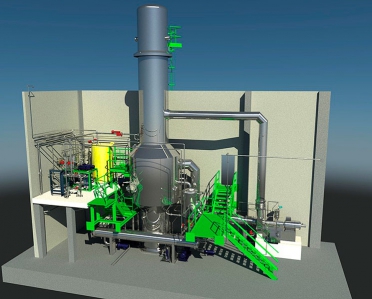Mechanical Vapour Compression
Mechanical vapour compression (MVC) or mechanical vapour recompression (MVR) reduces vapour consumption, replaced by a source of electrical energy, resulting in a very low operating cost compared to a multiple effect operation.
Home > Technologies > Evaporation > Mechanical Vapor Compression (MVC / MVR)
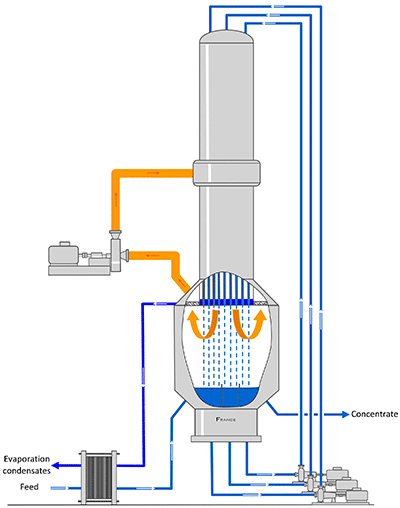
The vapour produced by the evaporator is sent to a MVC installation, to be compressed and heated up.
It is then resent to the evaporator to the outside of the tubes to be used as a heating steam. In this process, the evaporator is also used as the condenser for the vapour evaporation.
The main advantage of the Mechanical Vapour Compression technology is its low operating costs.
Energy consumption per tonne of evaporated water:
- MVC: ~ 15 kW.h / hr electric
- Single effect: ~ 630 kW thermal
- Triple effect: ~ 230 kW thermal
- Six fold effect: ~ 115 kW thermal
Cost reduction
- Vapour consumption almost zero
- Low consumption of cooling water
- More compact layout, compared to a multiple effect evaporator (a MVC evaporator is composed of a single evaporation body and a compressor)
Simplicity, responsiveness and flexibility of operation
The compressor is driven by a frequency inverter, which enables the implementation capacity to be finely and quickly adjusted from 30% to 100% of the maximum capacity.
Adaptation to production constraints
The MVC/MVR technology makes it possible for several compressors to be used in series in order to respond to constraints (significant boiling delay, decrease in exchange surface, etc).
Reliability
If properly sized and installed, MVC/MVR processes are very reliable. We have been using this technology for over 20 years, maintenance costs are extremely low on the compressors we use.
To ensure this reliability, France Evaporation has developed unique expertise:
- A largely sized separator, which allows maximum separation of evaporation vapour and avoids provoking product droplets in the MVC, in order to ensure the fan’s lifespan.
- Among our facilities, in addition to the separator, a vapour scrubber cleans the evaporation vapours and helps deconcentrate any remaining product droplets to preserve the blower mechanism. It also helps in countering foaming.
- On the outlet of the scrubber, a mist eliminator prevents possible droplets
- Many additional securities to monitor and ensure the proper functioning of the installation: levels, temperatures, vibrations, etc.
